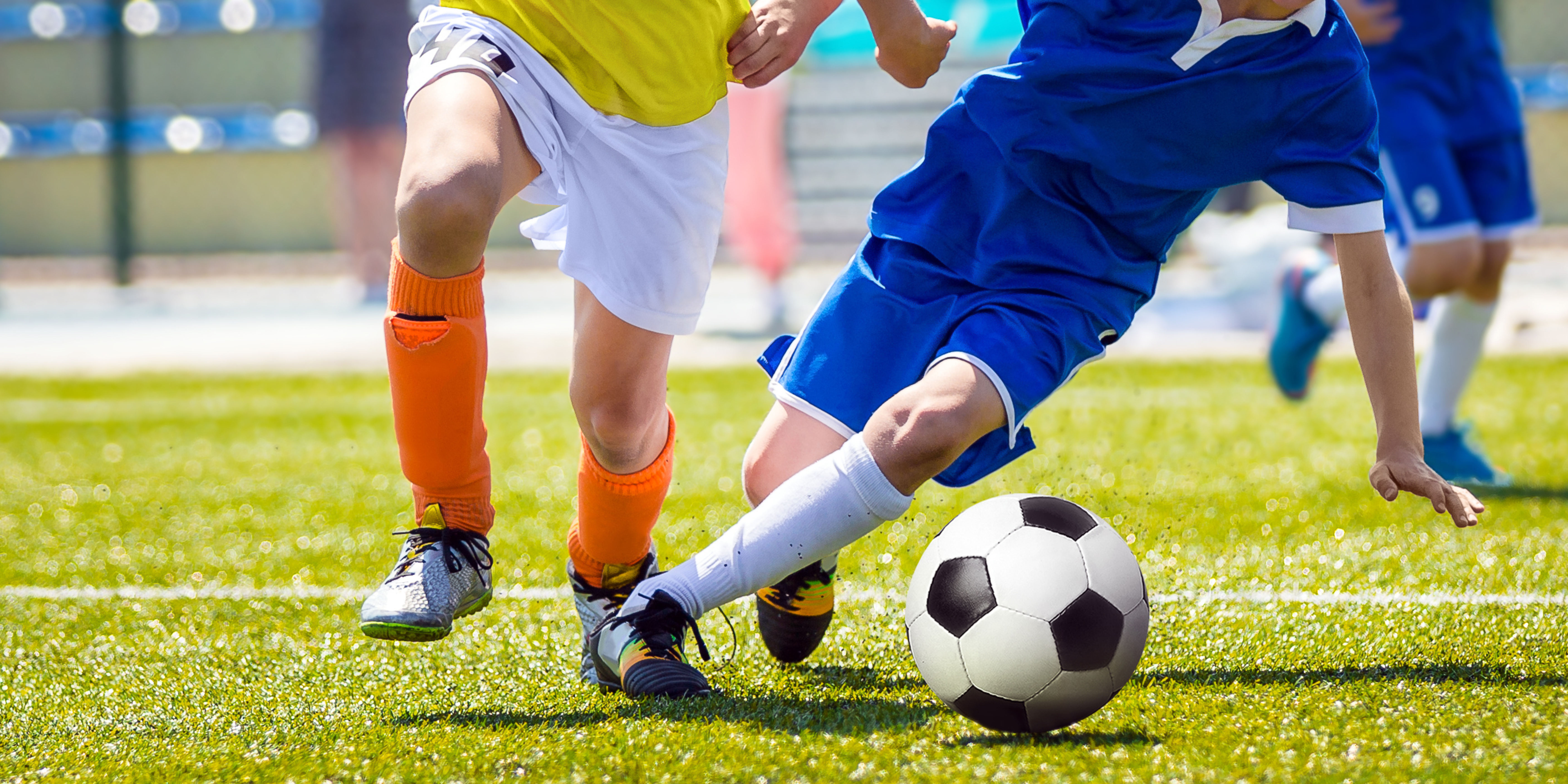Your child’s safety is paramount. As a parent, you want your child to enjoy playing soccer without the setback and pain of injuries. You may ask yourself, what are the risks? How concerned should I be? Do I need to enforce injury prevention training for my athlete? We’ve reviewed data from hundreds of journal articles looking at the prevalence and types of youth athlete injuries and all of the strategies for preventing injury. Read our summary to know what your athlete is facing.
Common Soccer Injuries
Strains, sprains and concussions are the most common soccer injuries. Athletes are more commonly injured through contact with a playing surface than with other players or the ball. Strains and sprains occur through poorly executed movement during the game or standard game play force the body was not prepared for.
The lower body is the most frequently injured. Athletes under the age of 18 are more likely to be injured in a game than during practice, likely because they are playing harder and paying less attention to their mechanics and proprioception. A gross majority of injuries result in reinjury. 40% of reinjuries result in a longer recovery time than the initial injury. Additionally, repeated injuries as a child can negatively impact growth and create lifelong issues.
Understanding the Injury Risk
Youth soccer has a higher injury rate compared to many other sports. Data compiled reports that youth soccer athletes are at risk for up to 48 injuries per 1000 hours of exposure to the sport. 44% of all youth soccer injuries occur in athletes under the age of 15 but likelihood of injury increases with age. 18% of all youth soccer injuries will impact growth. Injuries can keep your athlete out of training and competing 32 days on average. Youth injuries can result in low self-esteem, feelings of low self-worth, or depression depending on the perceived severity of injury and loss of time with the team by your child.
Sex-Specific Injury Trends
Musculoskeletal injuries vary between biological sex. Some of this is due to differences in hormonal development, and some is due to differences in musculoskeletal development. Research shows that young females are more prone to knee injuries while young males are at a higher risk of ankle injuries. Both sexes have a higher risk of injury during games.
Concussions in Soccer
Concussions are a significant concern in soccer. Young athletes get concussions from contact with a playing surface significantly more often than heading the ball or colliding with another player. The data indicates the concussion rate among soccer players is similar to that of American football and ice hockey players. Female high school soccer players have a slightly higher risk of concussion than high school males.
The Importance of Fair Play and Rule Enforcement
Two of the most difficult to enforce injury prevention tactics are fair play and proper rule enforcement. They both play a crucial role in reducing soccer-related injuries. Foul play and rule violations can lead to a significant number of injuries. Emphasizing fair play, respect for opponents, and strict rule enforcement is essential to minimize risks and ensure a safe and enjoyable soccer experience for your child. Unfortunately, this provides the least amount of protection because you cannot impact every team your child plays or every player on their own team`.
Conclusion
If your child’s training embraces industry leading tactics for injury prevention they will suffer fewer injuries, fewer emotional consequences of injury, stay in the game, and have fewer growth complications.
Injury prevention training tactics go beyond stretching and foam rolling. Injury prevention training tactics permeate training choices. It includes season specific timing of exercise selection, sport specific skill building, proprioception improving dynamic drills, identifying the unique injury risk of each athlete and programming to improve the musculoskeletal condition to reduce risk. It includes therapy to accelerate outcomes and adequately maintain the body. It includes performance vision training to improve concussion rates while establishing neurological baselines to better measure return to play. It may feel like a lot but an ounce of prevention is worth a pound of cure.
All of Novos’ training strategies are built to manage injury risk by improving your athlete’s musculoskeletal health and performance. All of this helps your child become a better athlete while reducing his or her risk of injury.
Ensuring your child’s safety is our top priority. By understanding the risks associated with the sport, such as sex-specific injuries and the prevalence of concussions, we can take proactive steps to protect your child. When you are evaluating training teams we hope you will ask the tough questions. What injury prevention strategies are being used? How do they relate to performance? How are you working to manage concussion risk? What concussion rehab protocols do you use? What injury risk factors do you take into consideration when programming for your athletes? We are more than happy to answer these questions and any others you might have. You can book a free consult call at any time.
